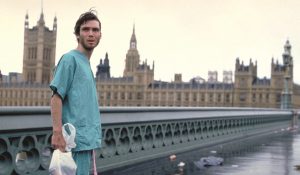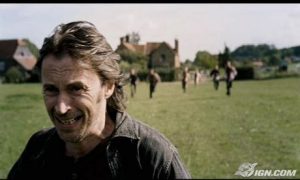TRADITIONAL and slow or infected and fast?
or infected and fast?
Zombiephiles must know where they stand on the fundamentals.
That answered, you can move to the 28 Days Later or 28 Weeks Later question.
In 2002, Danny Boyle’s original hit screens like a thunderclap. Zombies had never moved as fast and the need for potential victims to hit back with maximum speed and force created an incredibly visceral experience.
The tone is set by the opening sequence with animal liberationists inadvertently causing an outb reak of the killer ‘rage’ virus. Boyle then subverts our expectations with a near silent 10 minutes of Cillian Murphy wandering a completely barren central London after spending the apocalypse in a coma.
reak of the killer ‘rage’ virus. Boyle then subverts our expectations with a near silent 10 minutes of Cillian Murphy wandering a completely barren central London after spending the apocalypse in a coma.
Throughout the film, moments of quiet human interaction or sunlit peace are suddenly torn apart by frenetic attacks. My favourite scenes are the tunnel breakdown and the final confrontation between soldiers and infected.
Then, in 2007, Boyle handed over the reins to Spanish director Juan Carlos Fresnadillo. What a masterstroke.
There is no doubt that overall, Boyle’s earlier film is technically superior and innovative and presents a grander vision, but I think the sequel still edges it.
The opening of 28 Weeks Later is one of the best in modern horror cinema and, even now, I won’t spoil it. I watched it again the other night and it still packs a punch.
Apart from more expertly staged action sequences – the basement infection spread, the Green Zone marine attack, the helicopter slaughter – 28 Weeks Later also has the stronger human story at its core bolstered by a brilliant performance from Robert Carlyle.